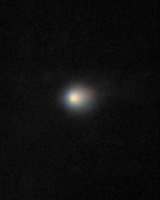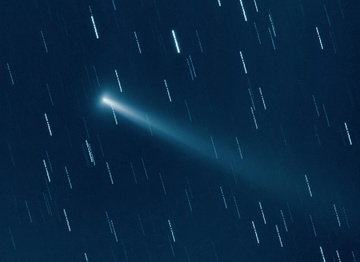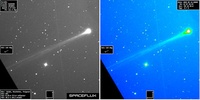Welcome to COBS!
Comet Observation database (COBS) saw first light in 2010 and is maintained by Crni Vrh Observatory. It is a free and unique service for comet observers worldwide which allows submission, display and analysis of comet data in a single location.
Amateur astronomers can make valuable contributions to comet science by observing comets and submitting their observations to COBS as professional astronomers typically do not have telescope time required to acquire regular observations. We therefore encourage comet observers worldwide to submit their observations and contribute to the COBS database.
Registered observers may submit observations using a web based form which stores the observations in an SQL database and stores them in ICQ format. Observations may be queried and plotted in the website or exported for further processing, analysis and publication. The database currently contains more than 296200 comet observations of more than 1710 different comets and represents the largest available database of comet observations.
The data stored in COBS is freely available to everyone who honors our data usage policy. Please cite COBS as the reference if you use it for comet studies.
Latest image
Comet C/2025 K1 (ATLAS), obtained on 2025 Nov. 11 (4h22-4h45UT) with 60-cm, f/3.3 Deltagraph telescope and CMO. Exposure time was 10 minutes (30x20 seconds). Image scale is 0.80 arc sec/pixel. Copyright © 2025 by H. Mikuz, Crni Vrh Observatory. Link to a magnified image of the comet's nucleus area with a fragment that broke away from the nucleus.
Comets visible today at Crni Vrh Observatory
| Comet | Mag | T | Source | Best time | Const | Obs | Chart | Comet PK | Comet MPC | Type | MPC name |
|---|
Location: Crni Vrh Observatory
Latitude: 45.94583; longitude: 14.07111; elevation: 726.0
Limiting mag: 15; Min altitude: 0; Min solar elong: 0; Min moon elong: 0
All times are in UTCComet finding charts provided by Dominic Ford: https://in-the-sky.org/
Lightcurve of comet C/2025 A6 (Lemmon)
Recent observations
| Type | Comet | Obs date | Meth | Mag | T | App | P | Dia | DC | Tail | Tail unit | PA | User | Pk |
|---|
Latest news
ESA pinpoints 3I/ATLAS’s path with data from Mars
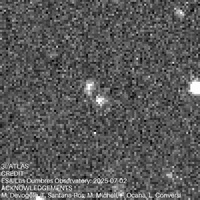
Since comet 3I/ATLAS, the third known interstellar object, was discovered on 1 July 2025, astronomers worldwide have worked to predict its trajectory. ESA has now improved the comet’s predicted location by a factor of 10, thanks to the innovative use of observation data from our ExoMars Trace Gas Orbiter (TGO) spacecraft orbiting Mars.
Comet 3I/ATLAS has sprouted an unusual tail
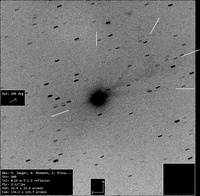
An interstellar visitor lights up the Red Planet’s sky
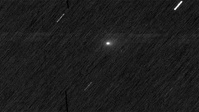
ESA’s Mars orbiters have observed comet 3I/ATLAS, only the third interstellar comet ever discovered. The faint, distant object revealed a glowing coma as it was heated by the Sun. Researchers are still studying the data to understand its makeup and origins. This rare event also foreshadows future missions like the Comet Interceptor, designed to chase such elusive visitors.
Where do 3I/ATLAS and other interstellar visitors come from?
